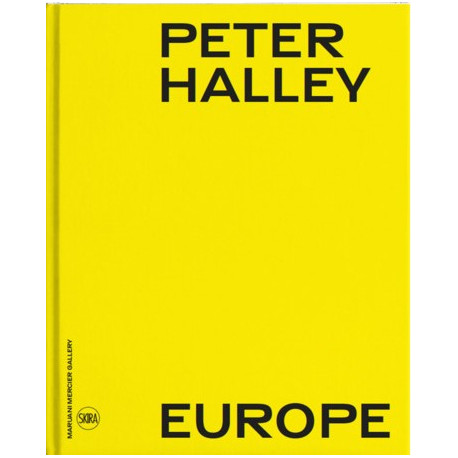No products
Product successfully added to your shopping cart
There are 0 items in your cart. There is 1 item in your cart.
Our webstore uses cookies to offer a better user experience and we consider that you are accepting their use if you keep browsing the website.

Contemporary art
- New Art Books
- Exhibition catalogue
- Highlights
- Art Book Sale
- Museum's Shop & Gifts
- Bilingual art books and foreign editions
- Children's Books
- Art History
- Painting
- Architecture
- Sculpture
- Drawing & Engraving
- Photography
- Contemporary art
- Decorative Arts & Design
- Art Techniques
- Critics
- Entertainment art books
- Civilisations
- Partners Reviews
Peter Halley - Europe
Devoted to an examination of the extensive recognition Halley has received in Europe, this book traces the history of his forty years of activity in Western Europe.
1 item in stock
| Model | 9782370742261 |
| Artist | Peter Halley |
| Author | Domitile d' Orgeval, Galerie Maruani Mercier |
| Publisher | Skira |
| Format | Ouvrage relié |
| Number of pages | 192 |
| Language | Bilingue Français / English |
| Dimensions | 300 x 240 |
| Published | 2024 |
Since the mid-1980s, Halley’s paintings and writings have been received by Europeans with remarkable enthusiasm – like a select group of American artists before him, such as Andy Warhol, Robert Ryman, and Richard Serra. Recounting the exchanges between Peter Halley and Europe enables us to identify the high points, and to measure and understand the importance of his work. The book includes an introduction essay written by Domitille d'Orgeval.
Peter Halley was born in New York in 1953. He received his BA from Yale University and his MFA from the University of New Orleans in 1978. Moving back to New York City had big influence on Halley’s painting style. Its three-dimensional urban grid led to geometric paintings that engage in a play of relationships between so-called "prisons" and "cells" – icons that reflect the increasing geometricization of social space in the world. Halley began to use colors and materials with specific connotations, such as fluorescent Day-Glo paint, mimicking the eerie glow of artificial lighting and reflective clothing and signs, as well as Roll-a-Tex, a texture additive used as surfacing in suburban buildings.
Halley is part of a generation of neo-conceptualist artists that first exhibited in New York’s East Village. This group includes Jeff Koons, Haim Steinbach, Mayier Vaisman, and Ashley Bickerton. These artists became identified on a wider scale with the labels neo-geo and neo-conceptualism, an art practice deriving from the conceptual art movement of the 1960s and 1970s. Focusing on the commodification of art and its relation to gender, race, and class, neo-conceptualists question art and art institutions with irony and pastiche.
Halley's works were included in the Sao Paolo Biennale, the Whitney Biennale and the 54th Venice Biennale and represented in such museums and art institutions as the CAPC Musee d'Art Contemporain, Bordeaux, the Museo Nacional Centro de Arte Reina Sofia, Madrid, the Stedelijk Museum, Amsterdam, the Des Moines Art Center, Iowa, The Tate Modern, London, the Dallas Museum of Art, Texas, the Museum of Modern Art, New York, the Kitakyushu Municipal Museum of Art, Japan, the Museum Folkwang, Essen, and the Butler Institute of American Art, Ohio.
Recently viewed items













